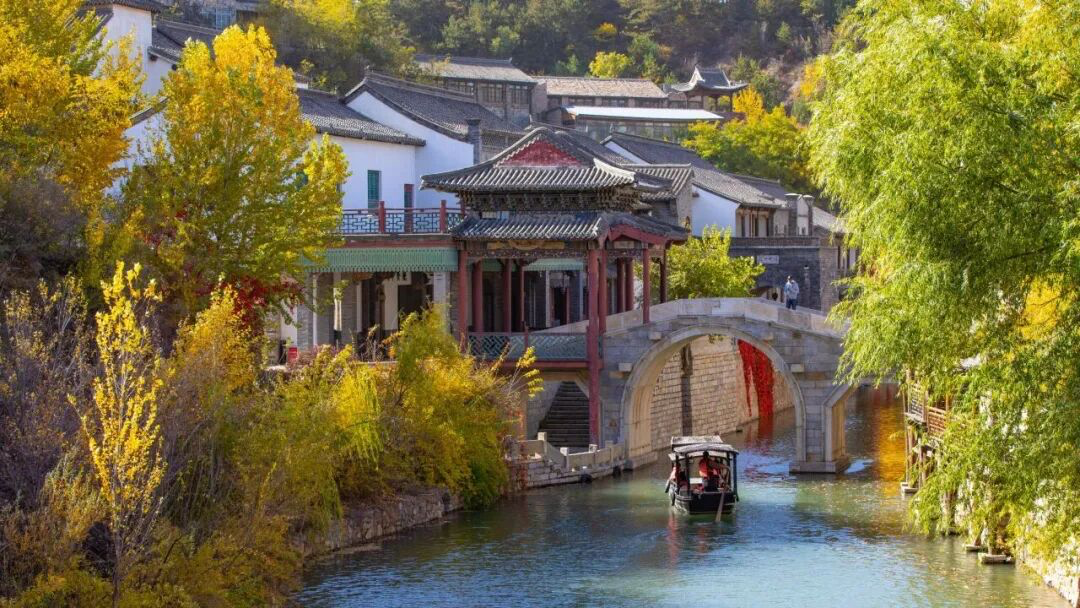The western section of Beijing Metro Line 11 is also known as the "Winter Olympics Branch Line". Because it is near the Shougang Big Air, many tourists come here specifically to visit it. The line has 4 stations: Xinshougang Station, Beixin‘an Station, Jin’anqiao Station and Moshikou Station, with a total length of about 4.2 kilometers. Today we will tell you the historical stories behind these stations.

Xinshougang Station

The station is located in the western part of Shijingshan District, at the foot of Shijingshan Mountain and west of Yongding River. Shijingshan Mountain is known as "the first immortal mountain in Beijing". In 2015, Beijing was successful in its bid to host the 2022 Winter Olympics. The site for the freestyle ski jump and snowboard jump was chosen in the southwest of Shougang Park. Therefore, it has become one of the main venues of the Beijing Winter Olympic Games.
Beixin’an Station

Beixin‘an Station is located in the central southeast of Shijingshan District. There was an ancient river called Jinkou River in the south of the village in the past. It was dug during the Jin and Yuan periods and was an artificial river that drew water from the Yongding River to irrigate fields and served as a canal. During the Guangxu period of the Qing Dynasty, the commercial service industry of Beixin’an town had already gained a considerable scale. Since the Republic of China, it has gradually become a prosperous place in western Beijing. The streets of Beixin'an Street are lined with stores, with more than 70 companies and 170 stallholders. In the 1950s and 1960s, it was the location of Shijingshan District Government.
Jin’anqiao Station

Jin’anqiao Station is located at the intersection of Fushi Road and Beixin’an Road, where Line 11 can be interchanged with Line 6 and S1. Jin'an Bridge has a long history of construction. It was constructed in 1970, and the main body was completed in 1972 and was open to traffic in 1974. The bridge is 53.7 meters long and 8 meters wide, and is the traffic choke point in the west of Shijingshan District, and an important channel to communicate with Mentougou and Xishan areas in Beijing.
In 2010, Fushi Road was expanded and extended westward to Mentougou district. A large overpass was built at the intersection with Beixin’an Road, named "Jin’an Bridge". Since then, the Beixin’an overpass and new subway station are all called "Jin’an Bridge".
Moshikou Station

Located in the western part of Shijingshan District, Moshikou has been a major town in the western part of Beijing and the western gateway to the capital since ancient times. Coal, wood, stone and mountain goods from the western mountains all entered the capital from here. It has Zhao Mountain as a screen in the south, Panlong Mountain in the north, Heitou Mountain in the west, Jin Ding Mountain in the east and Yongding River in the southwest. It was formerly called Grinding Stone Pass, named after the abundant production of grinding stones. In the Song Dynasty, it started to mine grinding stones and became famous in the Ming and Qing Dynasties. The grinding stone produced here is of good quality and durable.

During the Ming and Qing dynasties, Moshikou became a town-level administrative settlement. With its unique geographic location by the mountain and water, it was easy to hold but hard to attack. Therefore, soldiers were assigned to guard it. There was a three-mile street with many stores in Moshikou. It is connected to the capital in the east and has the "Camel Bell Ancient Road" in the west. Sometimes camel and horse caravans passed through it.



